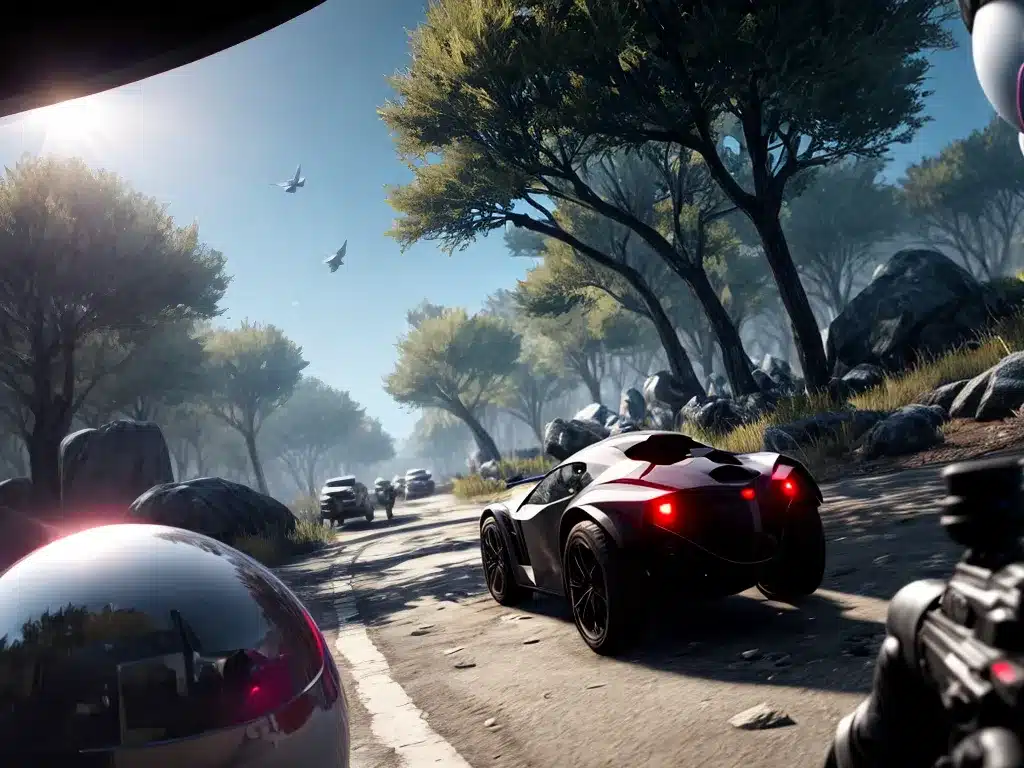
What is Ray Tracing?
Ray tracing is a technique used to generate photorealistic graphics by tracing the path of light rays as they interact with objects in a 3D scene. It simulates the physical behavior of light to produce incredibly realistic lighting, reflections, and shadows.
In traditional rendering, objects are illuminated using a combination of preset lighting models and textures. With ray tracing, the path of light is simulated as it interacts with objects. Rays are shot from the camera into the scene and bounce off objects before hitting the camera sensor. This allows for effects like:
-
Realistic reflections and refractions – Ray traced images can render transparent objects like glass and water with distortion and caustics.
-
Accurate shadows – Light rays can be traced as they interact with objects to create soft, natural shadows from multiple light sources.
-
Global illumination – Indirect lighting from light bouncing between objects can be simulated to create realistic ambient lighting.
Though computationally expensive, ray tracing produces far more realistic graphics compared to traditional rendering techniques.
Why is it Revolutionary for Games?
Ray tracing has been used for years in films and animation but was too demanding for real-time games. Recent advances in GPU hardware now allow ray tracing to run fast enough for interactive gameplay.
This leap has enabled real-time ray tracing in games and revolutionized graphics with photorealistic effects. Key advantages of ray tracing in games include:
-
Immersive environments – Ray traced lighting, shadows, and VFX heighten realism for deeper immersion in game worlds.
-
Streamlined development – Ray tracing reduces the need for pre-baked lighting, reflections, and other visual tricks used in traditional rendering.
-
Future-proof assets – Ray traced assets like models, materials, and textures can be reused easily across future games and hardware.
-
Unified workflow – Ray tracing blends seamlessly with existing game engines and workflows. Developers can progressively enhance visuals by replacing rasterized techniques with ray tracing.
By bringing film-quality graphics to real-time games, ray tracing empowers developers to create visually stunning worlds that fully immerse players. The technology will only continue improving to push gaming graphics into photorealism.
Ray Tracing in Action: Key Games and Effects
Here are some standout examples of ray tracing enhancing graphics in modern games:
Minecraft with Ray Tracing
The blocky Minecraft world gains new life with ray traced shadows, global illumination, reflections, and physically based materials. This transforms the simplistic graphics into a stunningly lifelike aesthetic while retaining the original art style.
Call of Duty: Modern Warfare
Ray traced shadows and ambient occlusion heighten realism in this popular shooter, from the cavernous interior of a cargo ship to sun streaming between leaves in a forest. Reflections add new depth to weapons and environments.
Cyberpunk 2077
Cyberpunk 2077 showcases advanced ray traced effects like diffuse illumination, ambient occlusion, shadows, and transparent reflections to realize its dystopian future city setting. Ray tracing is critical for its neon-lit, puddle-filled rainy scenes.
Forza Vista
The game’s garage mode uses ray tracing for highly accurate renders of the cars, allowing players to view photorealistic vehicles from any angle. Ray traced reflections, shadows, and global illumination bring out fine visual details.
As ray tracing continues evolving, it will usher in a new level of realism and immersion across gaming genres, from AAA blockbusters to indie projects. The future looks bright for game graphics thanks to ray tracing!












